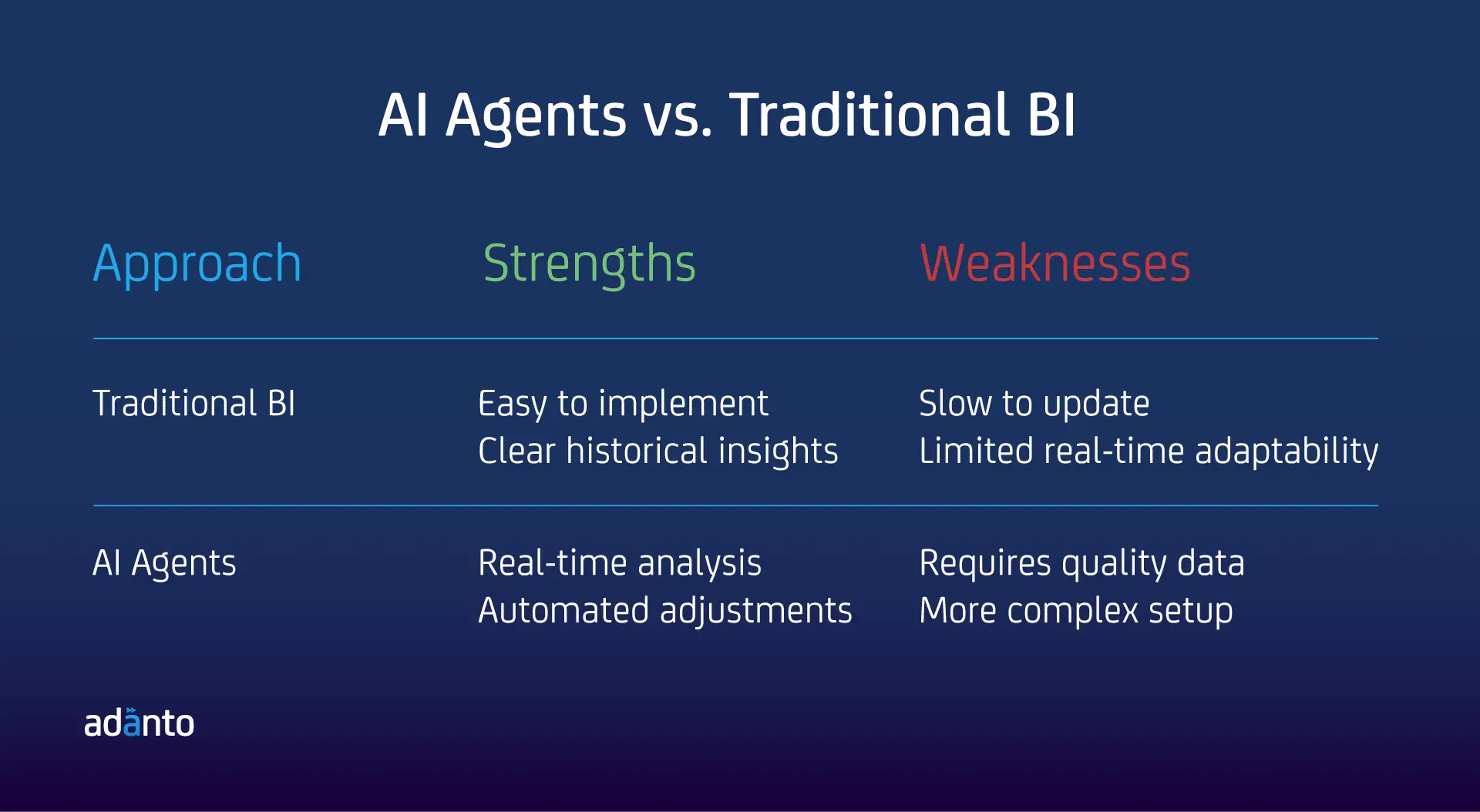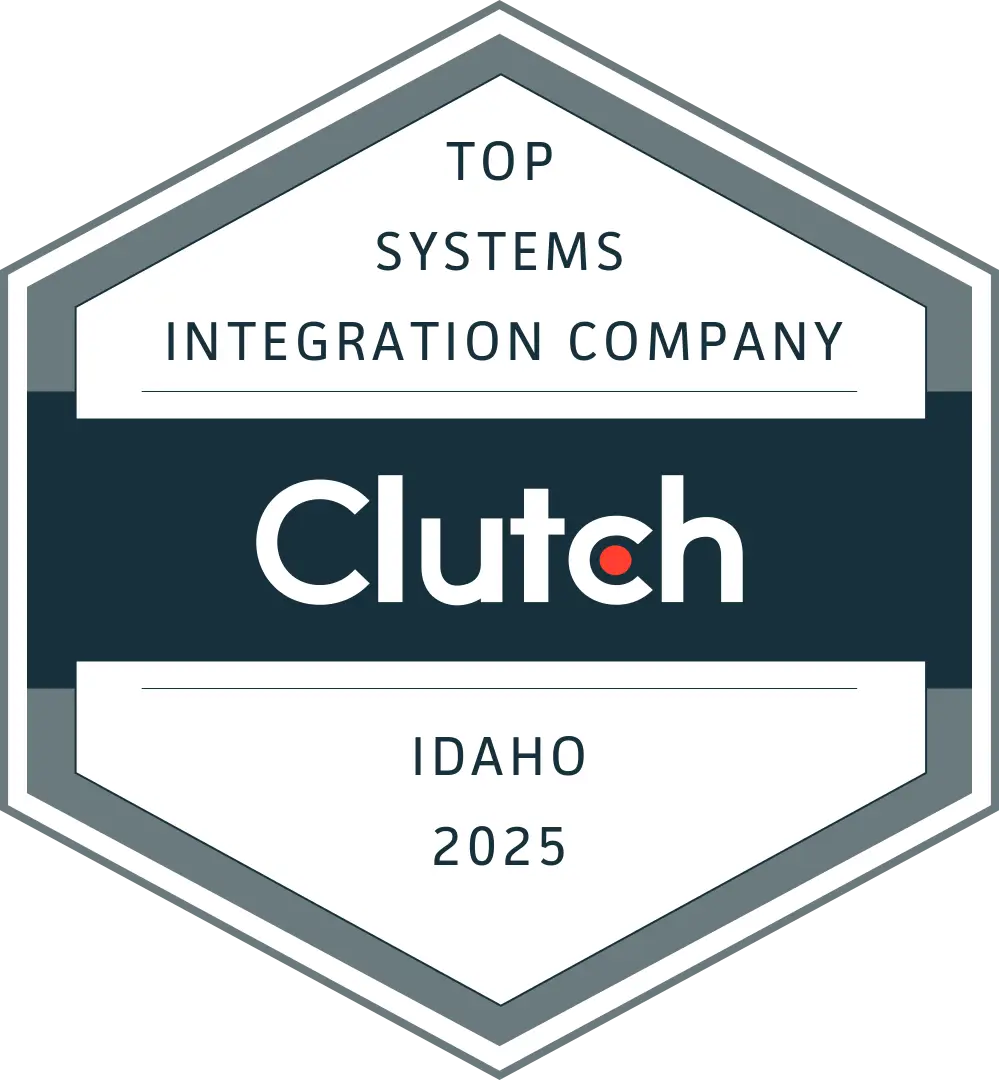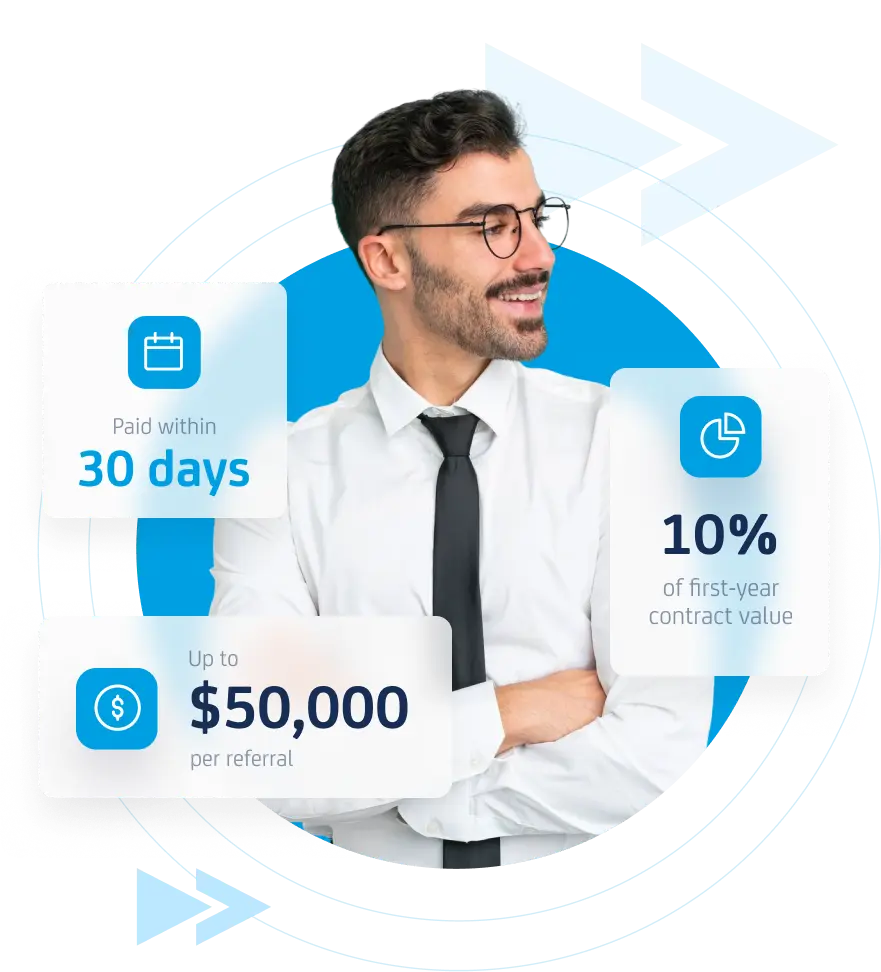
Retail forecasting has always been a tough challenge. Businesses want to predict demand, manage inventory, and optimize pricing to stay competitive. Traditionally, companies have relied on Business Intelligence (BI) tools — dashboards, historical data analysis, and static reports — to guide decisions. But now, AI agents are becoming more common in retail. They can process data continuously, adapt to changes, and even automate decisions.
Which approach works better for retail forecasting? This article compares AI agents with traditional BI to see which one delivers more value, especially in a fast-moving retail environment.
Table of Contents
The Basics: Traditional BI in Retail Forecasting
Traditional BI focuses on gathering historical data and presenting it through reports or dashboards. Retailers use this data to identify patterns, track sales trends, and plan stock levels. The advantage is clear visibility into what has happened and some indication of what might come next based on past trends.
However, this approach has limits. Traditional BI often depends on manual data updates and fixed reports that may become outdated quickly. It doesn’t always react well to sudden market shifts like supply chain disruptions, seasonal changes, or emerging consumer trends.
What AI Agents Bring to the Table
AI agents take forecasting a step further. Instead of waiting for a human to interpret reports, these systems analyze data continuously, learn from new information, and adjust predictions in real time. They can integrate data from multiple sources—sales, weather, social media, even competitor pricing—to refine their forecasts.
For example, an AI agent might detect a sudden rise in demand for a product due to a viral trend and automatically suggest changes in inventory orders. This dynamic response is hard to achieve with traditional BI alone.
Strengths and Weaknesses of Both Approaches

Traditional BI tools are straightforward and familiar to many businesses. They provide useful snapshots but often struggle to keep pace with rapid changes.
AI agents offer flexibility and speed. But they depend heavily on accurate, diverse data and may require investment in technology and skills.
Real-World Impact: Examples and Data
Research from McKinsey shows that companies using advanced analytics for forecasting see inventory reductions of up to 20% and service level improvements by 10%. Retailers applying AI-driven forecasting report better responsiveness to demand spikes and lower costs related to overstock or stockouts.
Consider a fashion retailer that implemented an AI agent system. The AI monitored social media trends and past sales, adjusting orders weekly instead of quarterly. This shift led to a 15% increase in sell-through rates and a 12% reduction in excess inventory within a year.
Conclusion: Which Method Fits Your Business?
If your retail operation handles relatively stable demand and values straightforward insights, traditional BI may suffice. But if you face frequent market shifts or complex data streams, AI agents provide a more responsive, flexible approach to forecasting.
No single method is perfect. Many businesses benefit from combining both—using traditional BI for foundational analysis and AI agents for ongoing, adaptive forecasting.
Want to use AI in your business?
At Adanto Software, we help retailers integrate advanced forecasting tools that fit their unique needs. Reach out to learn how you can make forecasting smarter.










